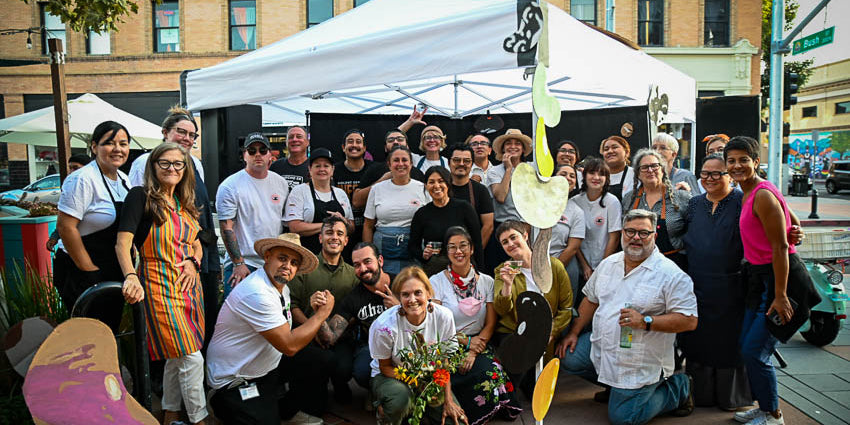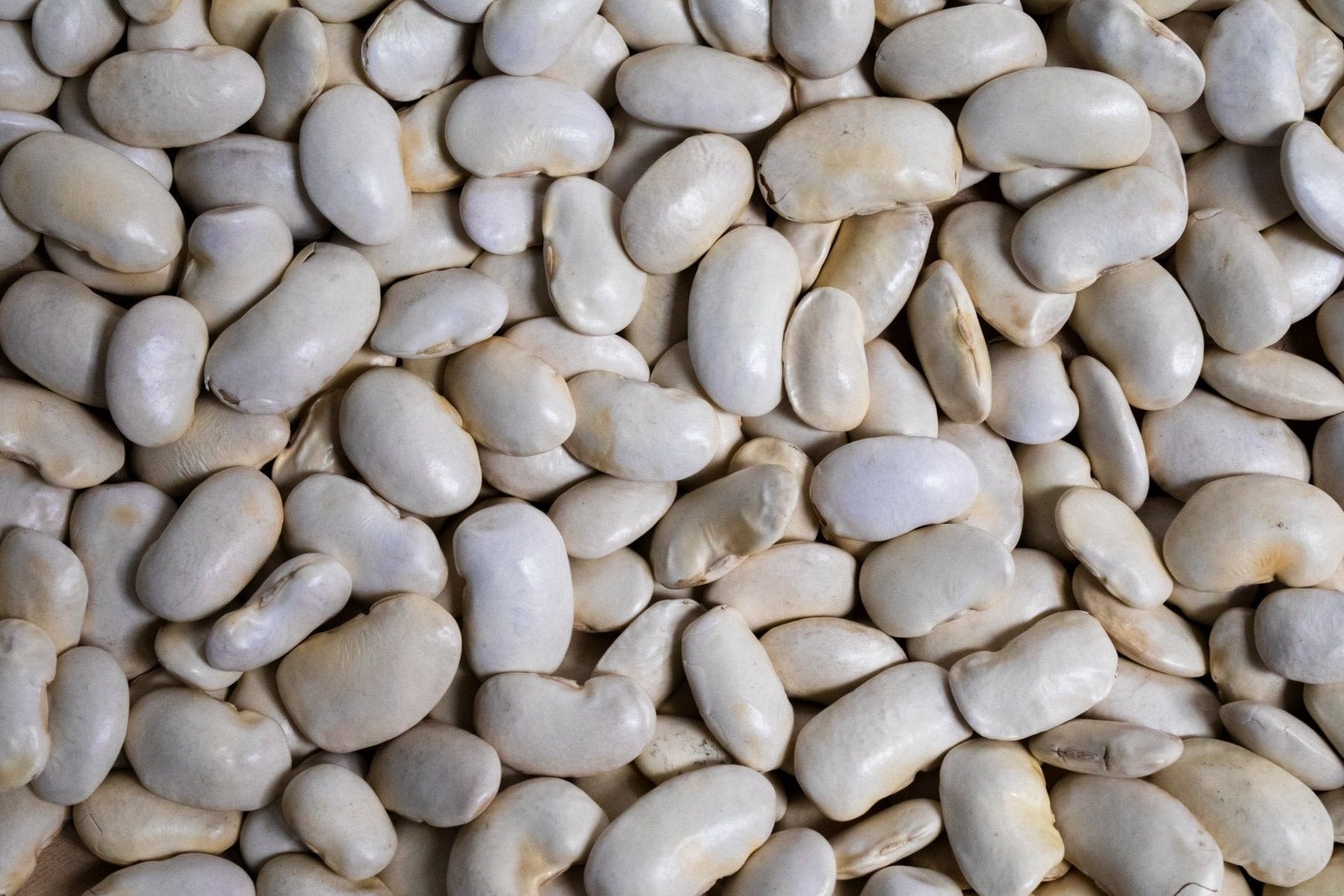
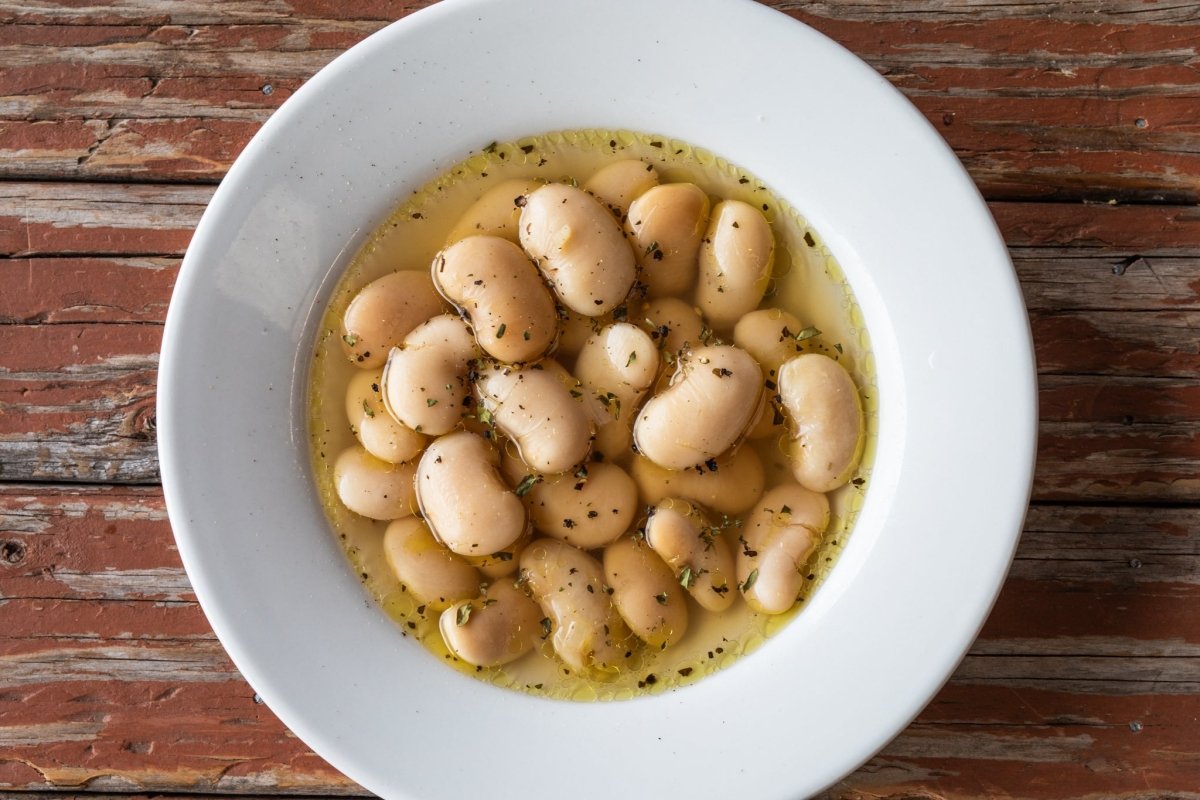
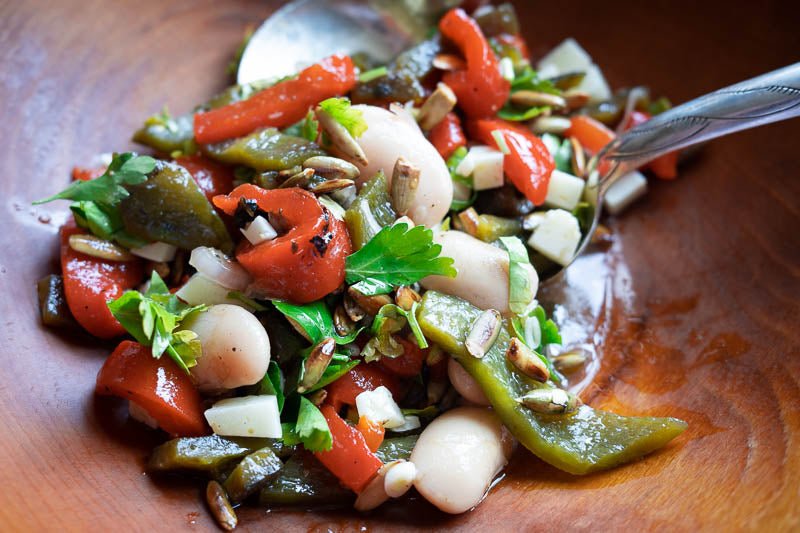
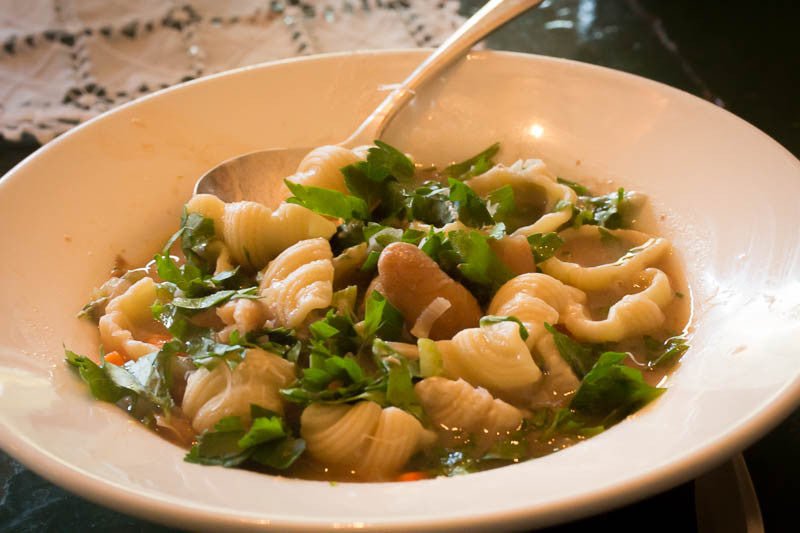
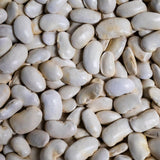
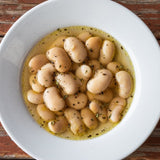
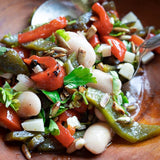

Royal Corona Bean
Free shipping on orders $50+
Enormous, thick-skinned runner beans with a surprisingly creamy interior. One of our all-time best sellers, it's a versatile giant that works in all kinds of cuisines. A true pantry staple.
A hand-harvested crop straight from Europe into your pantry. Giant, fat, white runner beans that are creamier and more luxurious than Greek and Spanish gigandes and a little denser than traditional Italian coronas. Royal Corona beans can replace any white bean, but be prepared to be astounded by how big they are when cooked. Fully cooked, they can be a little starchy but you can also keep cooking until they reach the creamy point.
This is our first venture outside of the Americas (although this bean's origins are clearly in Mexico) and we are happy to offer you this giant legume, created in Mesoamerica, bred in Italy, and grown in Poland.
Martha Rose Shulman praised them in the New York Times: "Royal Coronas are large white European runner beans that are similar to Greek gigandes but bigger, richer and sturdier. They are about twice the size of a lima bean and, unlike many other large white beans, the skin doesn’t slip off when you soak them."
Cooking Suggestions
Pot beans, soups, pasta e fagioli, casseroles, cassoulet, salads, dips
From the Rancho Gordo Kitchen
These oddly grand beans can be enjoyed in salads, tossed with wild mushrooms, or even pureed for a unique filling for ravioli and other stuffed pastas. You can push things even further and enjoy a superior creamy bean that needs only a few shavings of Parmesan and a drizzle of your best olive oil. Naturally, they’d be great in soups but don’t forget them in a chile sauce. A true alternative to meat.
Cooking Instructions
Check beans for debris, and rinse thoroughly. In a large pot, sauté aromatic vegetables (onions, garlic, celery, carrot, etc.) in olive oil. Add beans and enough water to cover by about 2 inches. Bring to a full boil for 10 to 15 minutes. Reduce heat to a gentle simmer, using a lid to help regulate the heat, and gently cook until done, 1 to 3 hours. Salt when the beans start to soften. A pre-soak of 2 to 6 hours will lessen the cooking time.
Similar to
Cassoulet, Large White Lima, Gigande, Corona
Latin name
Phaseolus coccineus
Country of origin
Poland
"I use Rancho Gordo for my heirloom purchases. It is really worth getting to know these delicious, beautiful beans."
Martha Rose Shulman
New York Times


